A denarius was minted by Lucius Marcius Censorinus picturing Apollo and Marsyas the satyr. This coin has attracted several interpretations because of the ambiguity of its symbolism.
The symbolism may refer to the moneyer’s family line, the gens Marcia, who claimed legendary descent from Marsyas. It may also be connected to the Social Wars - Marsyas was regarded as a symbol of political freedom, particularly free speech. The image of Apollo on the coin may refer to the plague of 87 BC.
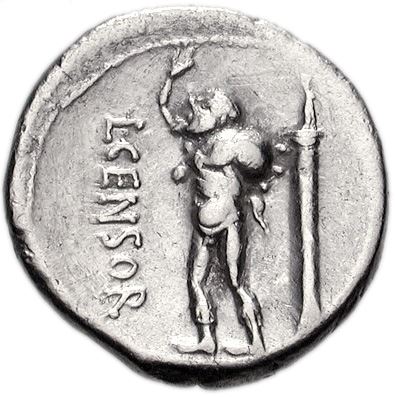
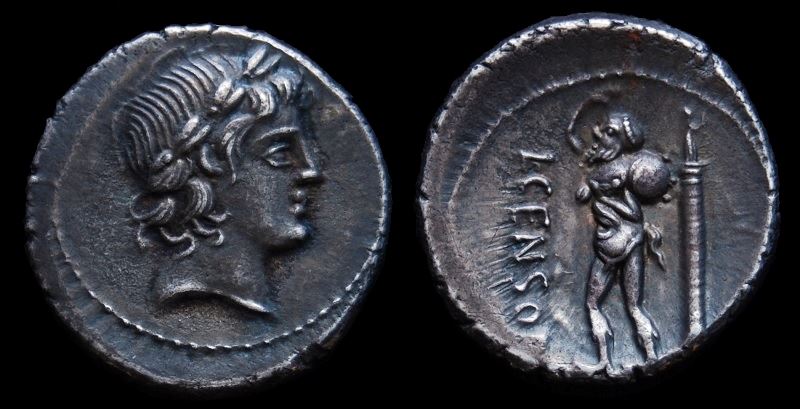
Reverse: Marsyas standing left, raising hand and holding wineskin over shoulder; L•CENSOR downwards in left field; column surmounted by statue of Minerva(?) in right field.
Die Orientation: 6 H
Weight: 3.46 g
"Among the Romans, Marsyas was cast as the inventor of augury and a proponent of free speech (the philosophical concept "parrhesia") and "speaking truth to power." The earliest known representation of Marsyas at Rome stood for at least 300 years in the Roman Forum near or in the comitium, the space for political activity. He was depicted as a silen, carrying a wineskin on his left shoulder and raising his right arm. The statue was regarded as an indicium libertatis, a symbol of liberty, and was associated with demonstrations of the plebs, or common people. It often served as a sort of kiosk upon which invective verse was posted."
"The plebeian gens of the Marcii claimed that they were descended from Marsyas. Gaius Marcius Rutilus, who rose to power from the plebs, is credited with having dedicated the statue that stood in the Roman forum, most likely in 294 BC, when he became the first plebeian censor and added the cognomen Censorinus to the family name. Marcius Rutilus was also among the first plebeian augurs, co-opted into their college in 300, and so the mythical teacher of augury was an apt figure to represent him."
"The descendant of Marcius Rutilus, L. Marcius Censorinus, issued coins depicting the statue of Marsyas, at a time when the augural college was the subject of political controversy during the Sullan civil wars of the 80s BC. On the coin, Marsyas wears a Phrygian cap or pilleus, an emblem of liberty. This Marcius Censorinus was killed by Sulla and his head displayed outside Praeneste. Sulla's legislative program attempted to curtail power invested in the people, particularly restricting the powers of the plebeian tribunes, and to restore the dominance of the senate and the privileges of patricians."
Provenance: CNG 106 (13 September 2017), lot 649.
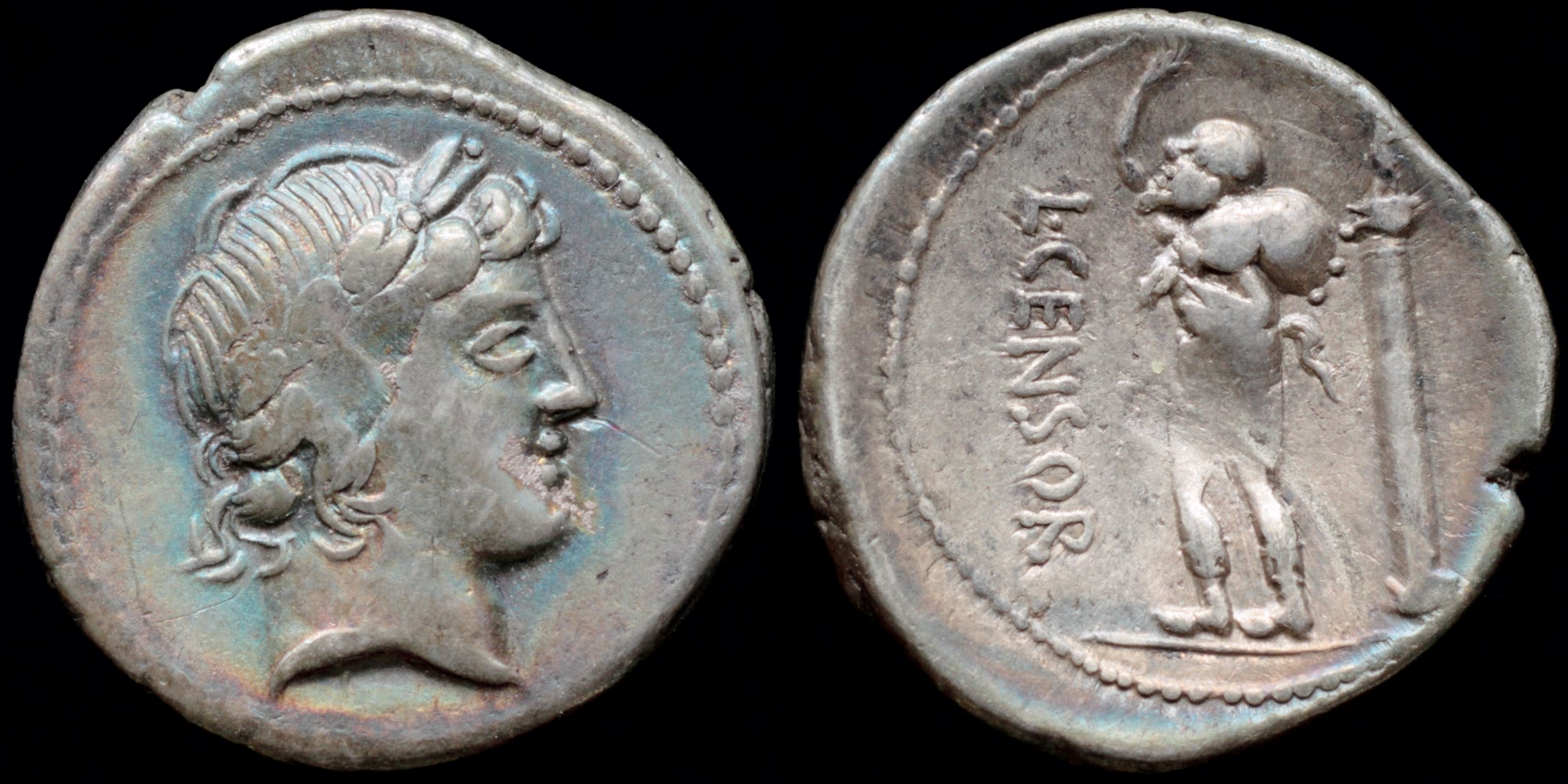
Reverse: Marsyas standing left, rising hand, holding with wine skin over shoulder; column topped with Victory behind L·CENSOR
Die Orientation: -
Weight: 3.8 g
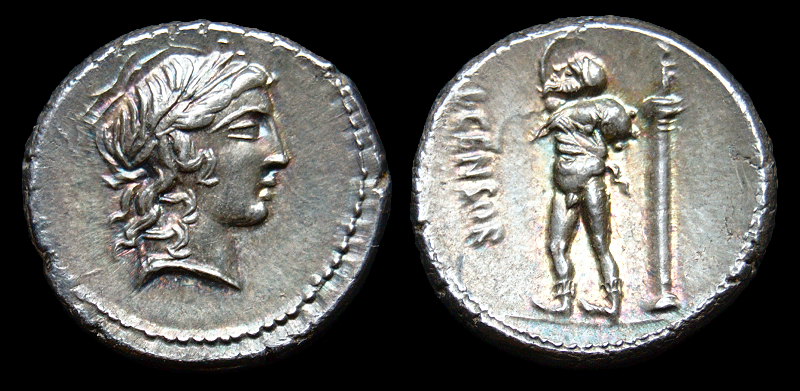
Reverse: Marsyas standing left, raising hand and holding wineskin over shoulder; L•CENSOR downwards in left field; column surmounted by statue of Minerva(?) in right field
Die Orientation: -
Weight: 3.99 g
Among the Romans, Marsyas was cast as the inventor of augury and a proponent of free speech (the philosophical concept "parrhesia") and "speaking truth to power." The earliest known representation of Marsyas at Rome stood for at least 300 years in the Roman Forum near or in the comitium, the space for political activity. He was depicted as a silen, carrying a wineskin on his left shoulder and raising his right arm. The statue was regarded as an indicium libertatis, a symbol of liberty, and was associated with demonstrations of the plebs, or common people. It often served as a sort of kiosk upon which invective verse was posted."
The plebeian gens of the Marcii claimed that they were descended from Marsyas. Gaius Marcius Rutilus, who rose to power from the plebs, is credited with having dedicated the statue that stood in the Roman forum, most likely in 294 BC, when he became the first plebeian censor and added the cognomen Censorinus to the family name. Marcius Rutilus was also among the first plebeian augurs, co-opted into their college in 300, and so the mythical teacher of augury was an apt figure to represent him.
The descendant of Marcius Rutilus, L. Marcius Censorinus, issued coins depicting the statue of Marsyas, at a time when the augural college was the subject of political controversy during the Sullan civil wars of the 80s BC. On the coin, Marsyas wears a Phrygian cap or pilleus, an emblem of liberty. This Marcius Censorinus was killed by Sulla and his head displayed outside Praeneste. Sulla's legislative program attempted to curtail power invested in the people, particularly restricting the powers of the plebeian tribunes, and to restore the dominance of the senate and the privileges of patricians."
Provenance: CNG 111 (29 May 2019), lot 613. From the Alan J. Harlan Collection, purchased from Edward J. Waddell, Ltd.
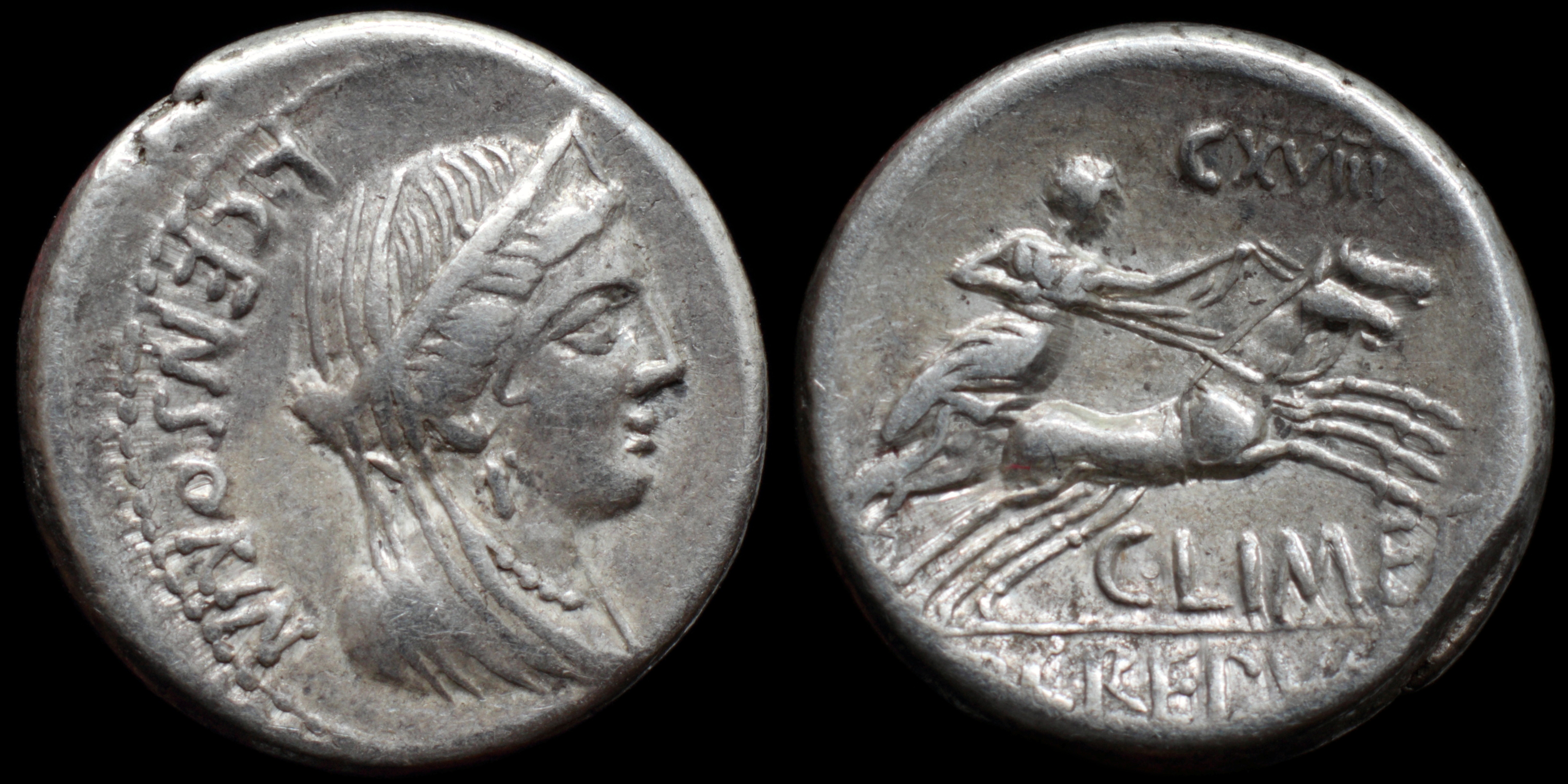
Reverse: Venus in biga right holding reins and goad; CXVIII / C·LIME(TA) / P·CREPVSI
Die Orientation: -
Weight: 3.8 g
